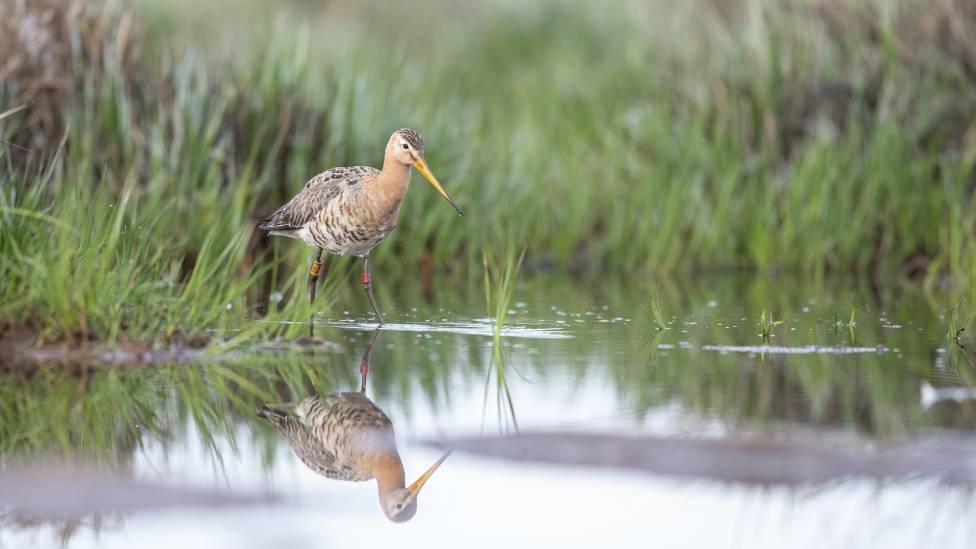Climate change: Flat Holm Island wildlife data becomes interactive
- Published
A group of wardens describe what it's like living all year round on a tiny island
Wildlife wardens hope to share one Welsh island's secrets with the world - by using cutting edge technology.
Flat Holm island, near Cardiff, is home to unique lizards and flowers, and is an important bird sanctuary.
Now the variety, location and numbers of flora and fauna will be updated on an interactive digital map at the city's Techniquest science museum.
The wardens hope this will improve understanding of climate change and nature.
Flat Holm is famous for its role in the invention of radio, but its varieties of plants and animals are not so widely known.
Cardiff Metropolitan University has teamed up with the island's wardens to design an interactive exhibit to reflect real-time wildlife data.
The wardens described it as a "really exciting chance" to engage in the conservation efforts on Flat Holm.
Life on the island is not always easy, according to the current wardens Heidi Aguirregoicoa and Pierre Court.
"It's just a really unique experience. I've never known a place like this," said Heidi.
Heidi, 21 and Pierre, 23 have been the wardens on Flat Holm for just a few months.
With the "unique" experience comes a vast range of responsibilities Pierre explained.

Heidi Aguirregoicoa said they log data about island's flora, fauna and also the weather
"It's very different to being a manager in an office," said Pierre.
As well as managing volunteers on the island, the wardens guide tours, run the island pub, maintain buildings and infrastructure and ensure they have clean water.
"All of our water is collected from rainwater. It is then stored in a Victorian tank underneath the ground and filtered several times. And then we can finally drink it and use it in the accommodation," added Pierre.
"We basically use the water we've collected throughout the winter and it will last us the entire summer. So, this is a big concern of ours."
He said: "It makes you really humble living here and you understand that nature will always win. No matter what you do."
Slow worms, peonies, lavender and butterflies
Flat Holm Island has been a Site of Special Scientific Interest since 1972.
For the wardens and volunteers conservation work is at the heart of life on Flat Holm.
Home to a huge population of gulls, the island is also the habitat of slow worms with unique blue markings as well as moths, butterflies and rabbits.
Rare plants, such as rock sea lavender, wild peonies and wild leek also grow on the island.
To keep track of wildlife, the wardens conduct regular surveys.

The interactive map at Techniquest is designed to give an insight into the island's wildlife and weather
"Some of our surveys are monthly and weekly, and some are daily.
"The daily survey is the bird survey. We do a long round trip for an hour every morning, about 7:30 around the edges of the island," explained Heidi.
They do a rough count of birds and log numbers of the types of moths, butterflies and slow worms.
The way the wardens log this data has now changed. Instead of using a paper and a pen, information will be uploaded to an app.
This project was a result of a collaboration between Cardiff Harbour Authority, Cardiff Metropolitan University, Techniquest and Yard, a technical marketing agency.
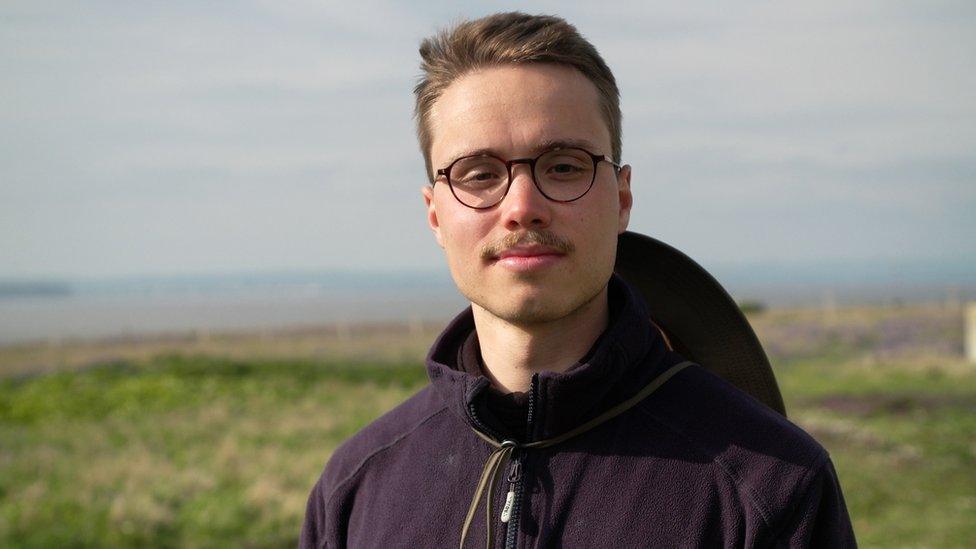
Pierre Court said they also run the island's pub as part of their duties
Heidi said the new method of logging data is quicker and there is no risk of the data being lost.
As well as feeding directly to an exhibit at Techniquest Science Discovery Centre in Cardiff Bay, the data contributes to long-term conservation datasets on the island.
Dr Fiona Carroll, an expert in our relationships with computers at Cardiff Met University, believes the pandemic helped us engage with data.
"People started to become fatigued by a lot of the complex data," she said.
"So, we've come up with a data impression, and that's really been inspired by going back to the 1800s and the French Impressionists."
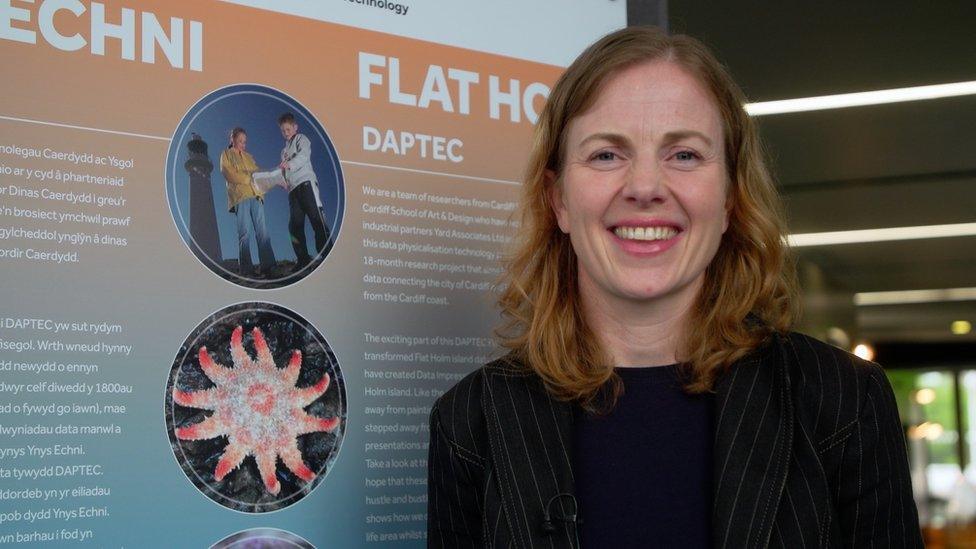
Dr Fiona Carroll said the exhibit's colours was inspired by the French Impressionists
The interactive exhibit allows people to press buttons which will show the numbers of different animals on the island, using colours and patterns.
Data about the weather on the island is also collected and visualised using prisms which rotate to show types of wind, rain or sunshine.
There are plans to use these methods and technology in other practical settings.
"We've got data coming out of our ears every second of the day, we're generating more and more data," explains Dr Carroll.
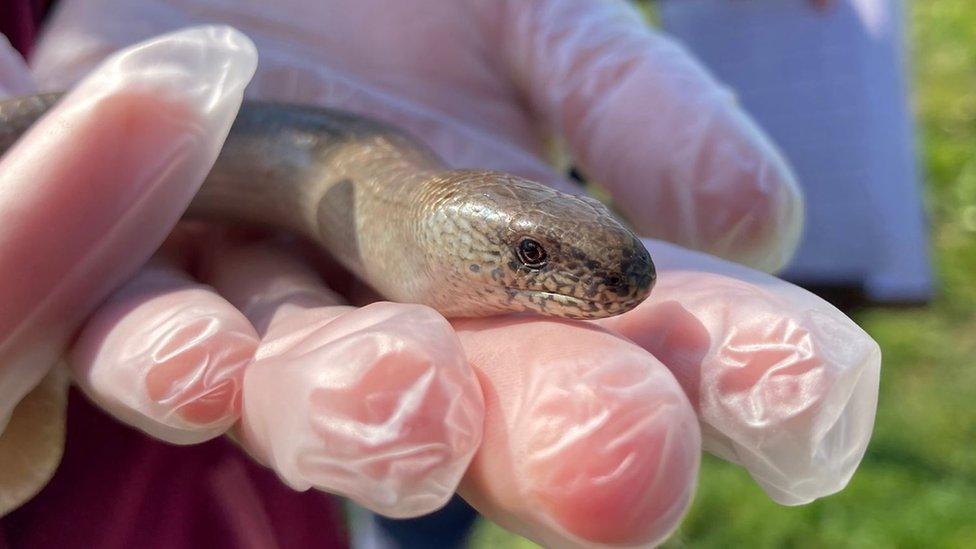
The slow worms on Flat Holm have unique markings on them
She said visualising data could help the public have a greater understanding of the world around them, in areas such as air pollution and making sense of rising food costs in supermarkets.
"It's really exciting knowing the general public are going to be able to experience Flat Holm from afar," said Heidi.
It is a view shared by warden Pierre, too.
"It's helping us build this relationship with the visitors and the public," he said.
"This has just started so we're really hoping that throughout the summer season we might have visitors coming to the island saying, 'oh yeah, I was at the Techniquest and I saw all the data'.
"We're hoping this is going to help Flat Holm grow even more, and help people to get into conservation and into their local sites of interest."
Related topics
- Published25 January 2019
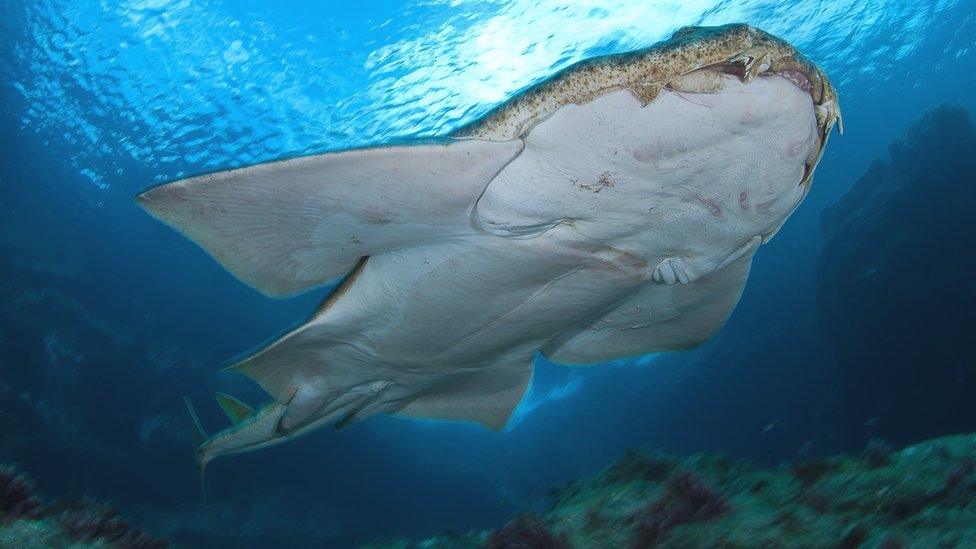
- Published20 April 2022
